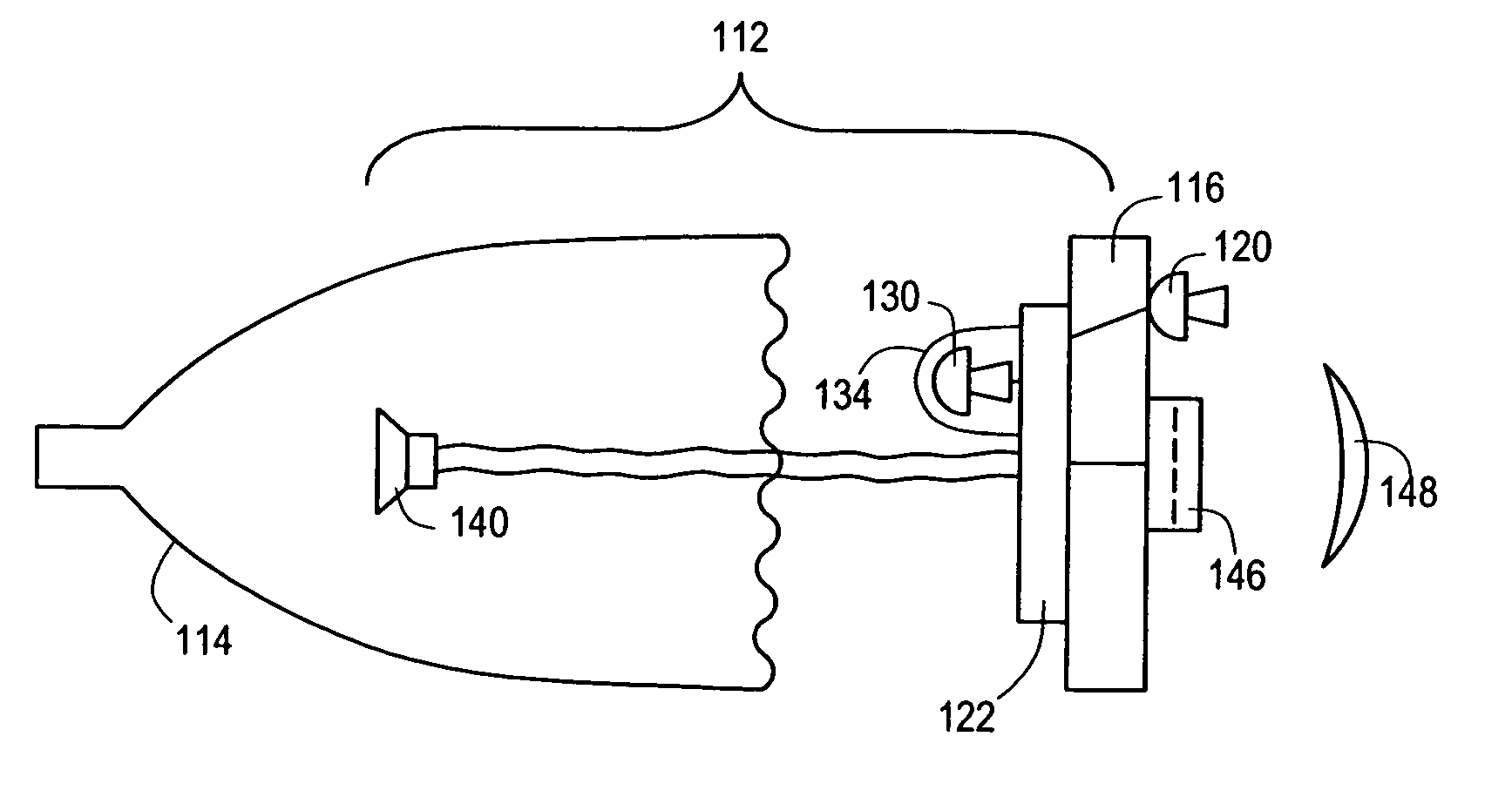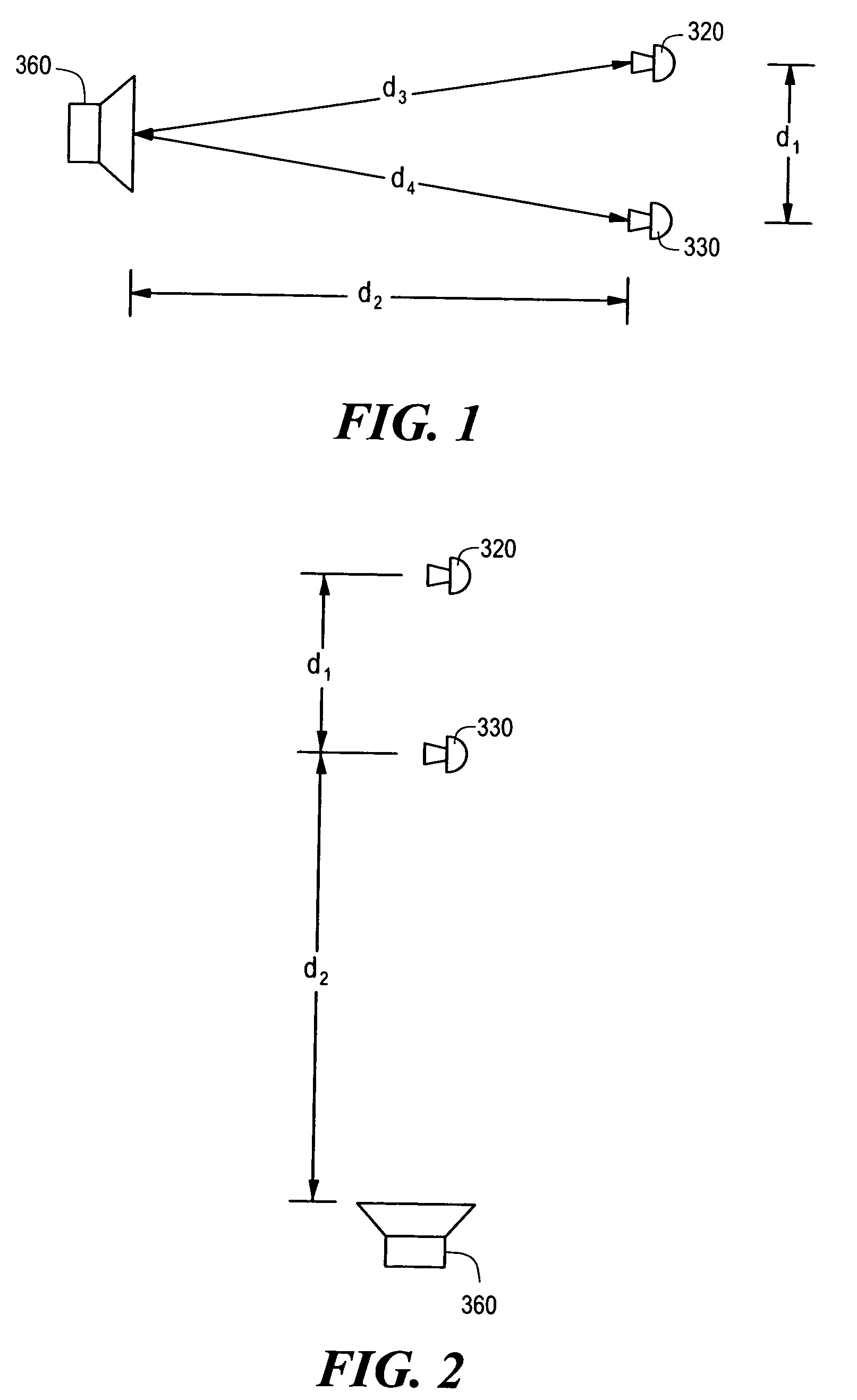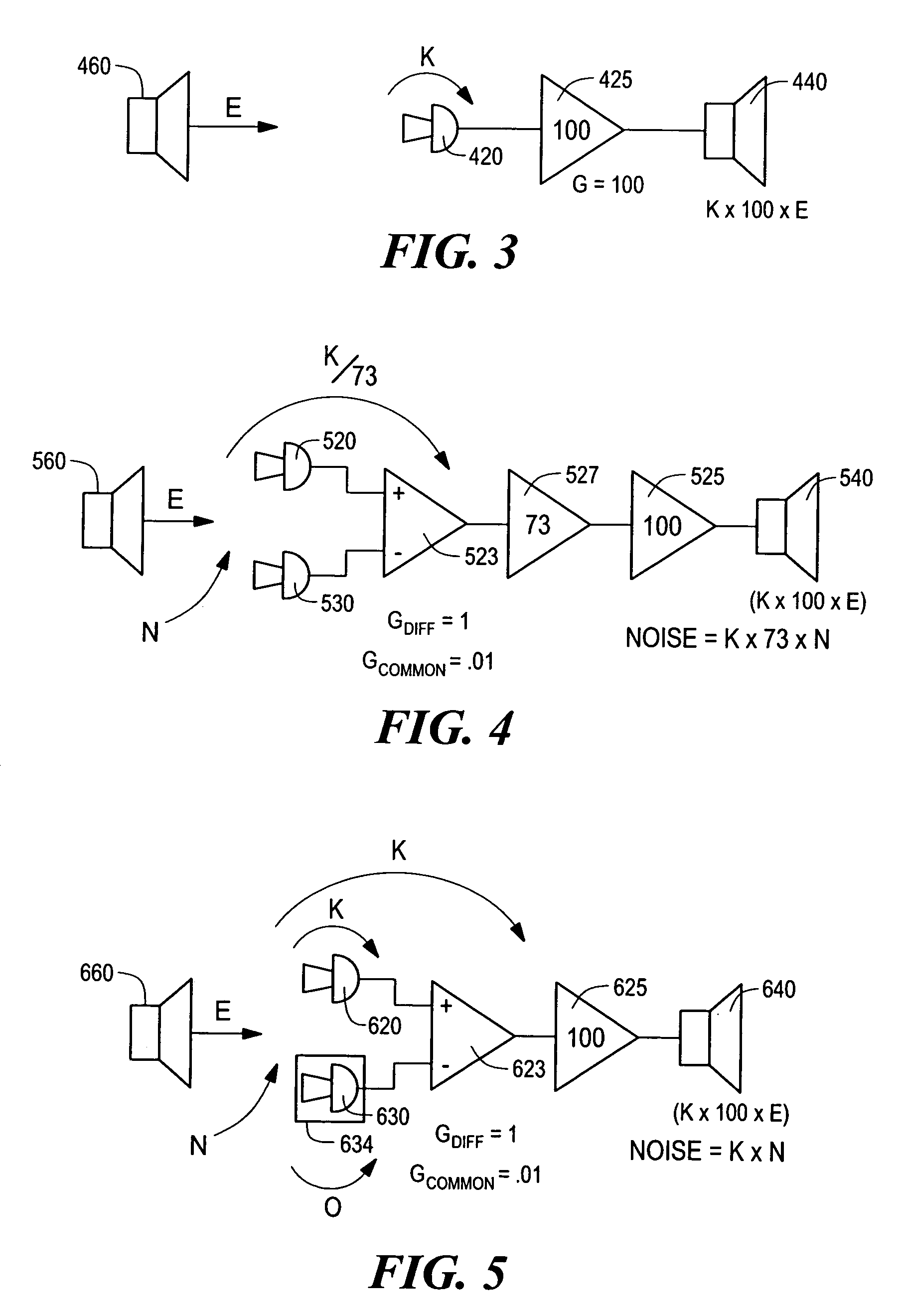Hearing aid having acoustical feedback protection
a technology of acoustic feedback and hearing aid, which is applied in the direction of deaf-aid sets, hearing devices active noise cancellation, electrical devices, etc., can solve the problems of gasket composition dampening any audio vibration, not being useful, and not being able to achieve the effect of high cancellation of any audio signal and enhancing cancellation
- Summary
- Abstract
- Description
- Claims
- Application Information
AI Technical Summary
Benefits of technology
Problems solved by technology
Method used
Image
Examples
Embodiment Construction
[0045]To aid in understanding the present invention, the case of two external microphones is distinguished from the present invention in which an internal and an external microphone are used. When two external microphones are used in a “subtractive” mode through the use of, for example, a differential amplifier, the “net” audio output from these microphones is radically reduced compared to that of a single microphone. This reduction is due to the necessarily close spacing of the two microphones in a miniature device such as a hearing aid. For example, the spacing between two microphones may be 0.5 inches.
[0046]When an audio signal is generated at a distance of 3 feet from the ear, the amplitude of the signal received at the two microphones so closely spaced is virtually identical. Under ideal conditions, if the audio signal is generated at a physical location centered between the two microphones, there is a total cancellation of the audio signal via a differential amplifier. Referri...
PUM
 Login to View More
Login to View More Abstract
Description
Claims
Application Information
 Login to View More
Login to View More - R&D
- Intellectual Property
- Life Sciences
- Materials
- Tech Scout
- Unparalleled Data Quality
- Higher Quality Content
- 60% Fewer Hallucinations
Browse by: Latest US Patents, China's latest patents, Technical Efficacy Thesaurus, Application Domain, Technology Topic, Popular Technical Reports.
© 2025 PatSnap. All rights reserved.Legal|Privacy policy|Modern Slavery Act Transparency Statement|Sitemap|About US| Contact US: help@patsnap.com



